Don't wanna be here? Send us removal request.
Text
Trauma in the Classroom: What Are The Triggers?
Memories: everyone has them. The smell of cookies, cakes, or pies from the oven, the gentle breeze of a sunny day, the beauty of a waterfall, a song, a perfume, lights, sounds, words, and scenarios, all trigger something in everyone’s memory. When someone has experienced trauma, especially children, a ‘trigger’ can mean the difference between a pleasant and unpleasant day, interaction, emotion, or complete turn of events in a child’s life. Webster’s dictionary defines the word ‘trigger’ as: “to cause an intense and usually negative emotional reaction in someone”. Anything that reminds a child of a traumatic event can be a ‘trigger’.

TRAUMA TRIGGERS - TWO EXAMPLES
Sally: Sally is one of the brightest 4-year-old students in Mrs. Jones preschool class. She is attentive, works well with other children, is engaging, curious, and a joy to teach. When the class was learning about community helpers, Mrs. Jones invited a local police officer to speak to the children about the police being their “friend”, and jobs that police do. When the policeman (who we will call Sam) entered the classroom on Monday morning, Sally began screaming, crying, pulling her hair, shaking, stomping her feet, and shouting “police are bad!” while lunging toward Sam. Mrs. Jones was surprised by this behavior and immediately takes Sally to an empty classroom to calm down while Sam continues to talk with Sally’s classmates.
When Sally was picked up from preschool by her aunt later that day, her aunt explained that both of Sally’s parents were arrested late at night, and are incarcerated. Now, whenever Sally sees a policeman, a police car, or hears a siren, she becomes panicked and afraid. Sally’s trauma is linked to a frightening event involving police taking her parents away and her being removed from her home. Policemen were Sally’s trigger.
Roger: Roger is 5 and attends a preschool located near a railroad track. When Roger hears the train cars bump together during outdoor playtime he screams and hides behind his teacher. The teacher finds out that Roger was in a serious traffic accident last summer where two cars collided, seriously injuring his cousin. The noise of metal colliding is Roger’s trigger.
These are just two of many examples of ‘triggers’ that can cause negative emotional reactions in children. Triggers are often unknown to anyone, other than the person who has suffered the trauma and makes the link between the event and the emotion.
Triggers: These responses are considered internal triggers that come from within based on events that the child was involved in that occurred in the past. The event stimulated a strong emotional response, such as fear, and dramatically increased the level of cortisol, the stress hormone in the brain. The stronger the emotion, the stronger the memory of the event. A trigger takes the child straight back to that situation as if it were happening again.
External triggers may include places, circumstances, or even people that are in a child’s life and can trigger negative behaviors. Going to a football game may remind a child of the argument that their parents had on the way to the game. So, each time the family goes to a football game the child is anxious and on alert, waiting for the argument to start.
All of us manage emotional triggers at some time. A memory, smell or that feeling of an unpleasant but familiar place can cause us to be on high alert. Triggers can promote happy memories but also traumatic memories. How we manage the outcome comes with practice. A young child is still learning to self-regulate and managing triggers seems like an insurmountable task. The survival part of the brain is going into overdrive trying to protect us from perceived danger brought on by the trigger.

OW TO SUPPORT AND RESPOND
As adults, we must make sure that we model self-regulation by talking about our feelings and our strategy to manage how we feel, for example, “I’m feeling worried about those noises so I’m going to take some deep breaths and calm my brain”. Sometimes this can be easier said than done, particularly when we can’t identify what the trigger could be, such as in Sally and Roger’s case. When we don’t know how to handle the situation we may find ourselves going to a default mode of minimizing the emotion and level of empathy that is needed in the situation.
Have you ever heard an adult telling a child:
There’s nothing to be afraid of
Big boys don’t cry
Look, there’s nothing there
Stop that now!
Information adapted from the Child Welfare Information Gateway (2014) suggests a different approach to supporting children who experience triggers associated with trauma.
1. Identify the triggers. Sometimes what we say or do as adults can unknowingly trigger a child’s behavior. Try to give children the space to tell you how they are feeling and instigate conversations with parents or caregivers sooner rather than later.
2. Be emotionally available to listen to children in a calm space. Giving children a blanket or sensory item to hold while they talk can help take the focus away from the event and onto the fluffy material.
3. When responding, use a calm, low voice to soothe the child and also keep you calm as you may hear some difficult information.
4. Listen to what the child is saying and also notice what is being said with body language or what is being drawn by the child. Note the physical changes that the child experiences when being triggered.
5. Provide many positive, nonthreatening experiences for children. Give the child choices so that they feel they have some control over their lives.
6. Be patient. Overcoming a traumatic experience takes time and sometimes professional help from an outside agency.
7. Routines! Routines! Routines! Having a consistent day-to-day schedule and routines for children, along with having the same caregiver for children as much as possible is important.

THE WAY FORWARD
Supporting children triggered by common daily events can be a difficult task. Especially when we find it difficult to identify the trigger. Observing and documenting behaviors before an outburst, during an outburst and the outcome of the outburst can help to identify a pattern of behavior and trigger. Perhaps it’s sitting to a particular child, a noise, a word, a quick movement that initiates the emotional connection in the brain. Ensuring that the child experiences a sense of safety, and feels secure and valued can help minimize the effects of the trigger. There are many agencies that support the mental health and wellbeing of adults and children so remember that additional help is available if needed.
------------------------------------------------------------------------------
References
Child Welfare Information Gateway. (2014). Parenting a child who has experienced trauma. Washington, DC: U.S. Department of Health and Human Services, Children’s Bureau. https://www.childwelfare.gov/pubpdfs/child-trauma.pdf
©Dr. Kathryn Murray and Dr. Sharon Little, 2021.
Dr. Kathryn Murray is an early childhood pedagogical expert and creator of the Brain-SET Formula© for Classroom Design. She is the CEO of Future Strong Education - a global early childhood consultancy organization based in Australia. Kathryn supports educators and parents to give children the best possible start in life. Find Dr. Kathryn Murray at www.futurestrongeducation.com or connect with her through [email protected]
Dr. Sharon Little is an early childhood program lead and faculty in North Carolina. She is also a project coach, trainer, private early education consultant, speaker, and strong advocate for early childhood education. Sharon supports early educators, the community, and other early childhood professionals in trauma informed, developmentally appropriate practices, diversity, and higher education subject matter. Find Dr. Sharon Little at linkedin.com/in/sharon-little-ed-d-5b81a738
#signs of trauma#trauma#early childhood educator#earlychildhoodeducator#futurestrongeducation#childhoodtrauma#earlydevelopmentchildhood#educationisthekey#earlylearningchildhood#earlychildhoodeducation#childhood#childhealth
0 notes
Text
Memory, Learning and Reward Systems – Do They Go Together?
Why is it that sometimes things seem to be right there in our memory and other things just seem to disappear? Some believe that giving external rewards helps the memory process.
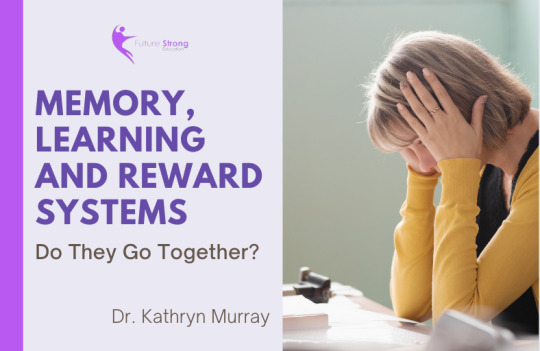
I read an article in Psychology Today by Art Markham that explained the three phases of memory linked to how we learn. The phases are:
Encoding – being exposed to new information and trying to take it in
Retention interval – where events may either help memory or lead us to forget; something like sleep after being exposed to new information could help us to retain the learning.
Retrieval phase – where some sort of cue leads us to recall the new information.
How do we combine these 3 stages effectively so that we can learn easily? If we do things like paying extra attention during encoding, we will notice more and that helps us to remember. When retaining and retrieving information if we can link it to something that we already know and have a vivid memory of, then it is easier to pull the information from our memory banks.

What really interested me about this article is the consideration of rewards to help us remember details. What do you think would work better – knowing there was a reward at the encoding stage or the retrieval stage?
After undertaking experiments with different criteria, it was found that generally, people try harder to remember the information at the encoding stage if they know that a reward is involved. By the time we get to the retrieval stage, no level of rewards can help up retrieve information if we haven’t taken notice in the first place. The aim is to be able to quickly retrieve information so that we can use it efficiently and effectively.
What does this mean for teachers?
I don’t subscribe to always offering extrinsic rewards to children. Many years ago, in classrooms everywhere, teachers had jars of lollies on their desks to reward correct responses or good behaviour. Then it went to a basket of lucky dip items, such as new pencils, a fancy eraser or a notebook. Teachers across the world have different methods to encourage memory, learning and understanding. Extrinsic rewards were used a lot as a way of encouraging behaviour and learning.
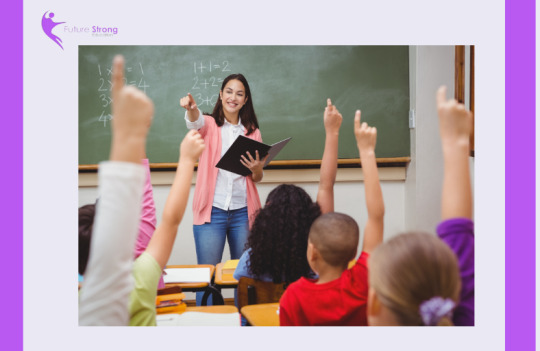
If we go back to the research, the reward used as part of the study was money. But what if the focus was not on an external reward but an internal reward. Intrinsic motivation is also a form of reward in my opinion. Feeling pleased with yourself, knowing you have done your best or the right thing can be a powerful motivator.
What if… when we present children with new information to learn, we also provide the benefits of knowing this information. We give them a scenario of what’s in it for them if they can remember this information. For example, learning tessellations (fitting shapes together in a pattern) can help when going camping and having to pack the car, or packing a suitcase for a holiday. Learning the rule to find perimeter will help when designing the skateboard track on the school grounds.
What if…we put real-life connections with the new information to promote the intrinsic reward of being capable and agile in thinking. Some may call this project-based learning or another methodology. I tend to think it’s common sense to make the information we teach children relevant and realistic. Sometimes information just has to be learnt without context – but where we can, we should make those connections from old to new learnings.
So, do we need an external reward system if we design our teaching and learning to be relevant and contextual? I’m not sure that we do! ___________________________________________________________
Dr. Kathryn Murray is the founder of Future Strong Education Consultancy based in Australia. She has over 40 years of experience in the education sector as a classroom teacher, university lecturer and consultant. She speaks globally about many education topics and is the creator of the Brain-SET Formula for Classroom Design that aligns brain development with places and spaces that make up our teaching and learning environment.
Please contact Kathryn if you want to engage her for training your team or speaking engagements on [email protected] OR check the website: www.futurestrongeducation.com
#teaching#teacher#new information#rewards#futurestrongeducation#earlychildhood#earlydevelopmentchildhood#earlychildhoodeducation#earlylearningchildhood#earlychildhoodeducator#learningathome#educationmatters#learning#educationisthekey#education#memory problems
0 notes
Text
Teachers can experience trauma, too: The World of Trauma for Early Childhood Educators
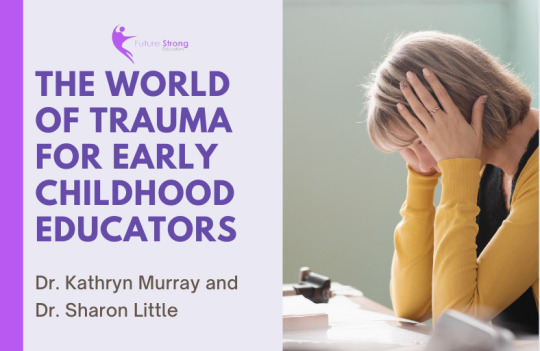
Tosha, a 27-year old single parent and toddler teacher in a child care center was feeling extremely exhausted and emotional when she contacted her college advisor where she was studying. She stated “I am on the verge of a nervous breakdown and to my breaking point! I have had a group of toddlers for the past two weeks on my own, while my assistant teacher has been out with the virus. I’m working 12 hours a day, in college studying a full-time load and taking care of my three-year-old son alone. This is too much for me! I’m done and I want out!”
The college advisor asked Tosha what her typical day looks like. Tosha said that usually, she wakes early each morning around 6am to dress and prepare breakfast for her and her son, whom she awakens at 7am. After taking care of her son, making lunch, doing some laundry, they are off for the day to her job at the child care center—but lately, she has been working in the center from 6am to 6pm. She’s exhausted, tired, despondent, and feels guilty because she’s not able to manage as she used to juggle work, her son, and study.
Dinner is often fast food, and interaction with her own child is placing a tablet in the child’s hands so she can do her college homework. Now her son is beginning to exhibit challenging behaviors at home and in his classroom. The college advisor asks Tosha to think about how she can minimize the stress by perhaps delaying college at this point. Tosha resists saying this is the only chance she has, and with seven classes to complete before graduation, she doesn’t want to quit school. Additionally, Tosha also told her advisor she wanted to get a second job to pay bills because there is so much financial pressure on her low income from the child care center.
This scenario is real and affects early childhood educators worldwide.

The demands on Early Childhood Educators
Early childhood educators are usually the first port of call for parents as they transition their children from home to socializing and learning with others. Good early childhood educators are a dedicated group of professionals who take their responsibilities seriously. There has always been a big paperwork load to record progress, comply with regulations, follow frameworks, align with professional bodies, continue with professional development, and more. That’s before we even look at interacting with the children, planning learning experiences, documenting learning, developing relationships – all of the things that quality educators do each day. Things that those not in the profession wouldn’t see.
In recent times, these demands have increased. Stories like Tosha’s are becoming more common. Children’s behavior is becoming more erratic and challenging, parental expectations are becoming more demanding, paperwork, social distancing rules, child-adult ratios, space limits, illness, worry, and concern have all been added into what was already a demanding job.
Simple things like having a bathroom break can be problematic, so educators don’t drink a lot or have to wait until another adult can supervise while they step out of the classroom. Understaffing makes this harder. The constant difficulty of finding early childhood staff is the other pandemic that is sweeping the world. Some centers feel they have no choice but to hire someone who is not remotely interested in children just to keep the center doors open. The comparatively low wages don’t help the situation either when educators compare income from a less stressful job to working in an early childhood center. What does this mean for the quality of education and care that is available in the centers?
The statistics before the pandemic, tell us that in America:
42% of degree-qualified educators leave the profession in the first 5 years. At least 66% of experienced educators think about leaving and at any given time 36% are likely to find another career path to follow. Educators leave the profession due to many reasons, such as dissatisfaction with the job (55%), family or personal reasons (43%), are at retirement age (32%), finding a better job (32%), or financial reasons (18%). There is no space here to look into what is included in each of these reasons, but the point is that over half leave teaching because they are generally dissatisfied that the job is not what they signed up for.
Teacher burnout and trauma are real. It’s the other pandemic that we have to monitor, find a way to immunize our quality early childhood professionals use treatments so that they aren’t pushed to the breaking point like Tosha.
Demands on the Administrator
Administrators are stressed, can be overwhelmed with paperwork, the needs of families, and then must make ethical and professional decisions to hire people just to fill the staffing gaps. There is clear evidence about the importance of quality educators but sometimes there is no opportunity to choose high-quality staff. Sometimes the administrator must work in a classroom because of the ratio limits and being short-staffed AND continue with their administrative work too. This puts administrators and other staff members in the position of surviving – not thriving. In some cases, administrators and staff members are forced to make decisions that are morally and ethically uncomfortable.
The demands on the brain
When we feel stressed, the body floods the brain with the cortisol hormone. This is a survival technique cleverly used by the body to keep us safe. Cortisol triggers the fight, flight, or freeze response that puts us on high alert constantly. The brain is looking for danger so that it can move us out of harm (flight), help us defend ourselves (fight), or become invisible by not doing anything (freeze). The high level of cortisol during stressful situations means we end up with a foggy brain – hard to think, remember, make decisions – and it’s exhausting.
Educators and many others have been living in a state of high alert for many months. A small amount of stress and cortisol can be motivating in the short term, but long term, it causes serious physical and mental health concerns. Educators can feel overwhelmed trying to manage their personal and professional lives. They may experience ‘compassion fatigue’, a secondary trauma that occurs when ‘adults become overwhelmed by the suffering and pain of those in their care’ (Nicholson, Perez, Kurtz. 2019).
Ethical responsibilities
As a professional, we have ethical responsibilities to ourselves, colleagues, children, families, the community, school boards, and government agencies. The NAEYC Code of Ethics is utilized by many educators across the world to guide good decisions when we find ourselves in a situation where we must determine the best possible outcome for everyone concerned.
What is your ethical responsibility to colleagues if you know they are struggling as we saw with Tosha at the beginning of this article?
What is the responsibility of the administrator to notice and care for staff?
Who is going to care for you?
It comes down to self-care first, followed by caring for others. Noticing the small signs within yourself and others as the pressure mounts. Not waiting until the stress and burnout signs are obvious before making some changes.
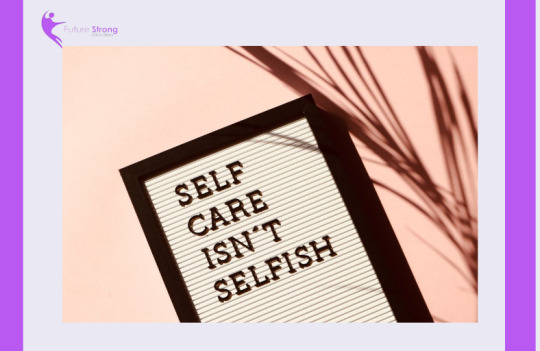
Self-Care responsibilities
What can we do to mediate the effects on educators and administrators?
There are many strategies that will support self-management and self-care. Here are a few to get you thinking:
Self-awareness – Take some time to reflect on how you are feeling – pause, take a breath and notice your emotions. Be honest and it’s ok to cry, get angry, feel sad.
Feelings - Recognize and acknowledge the feelings that come up for you and know that having these emotions does not make you weak – it is a strength to honestly reflect and put steps in place to change the feelings or situation.
Coping - Think about some big life events that were hard to get through at the time. Try to identify the coping mechanism you used then. Perhaps talking to a friend of relative to normalize your feelings, taking a break from the situation, losing yourself in a novel to give your brain a break.
Start to cut - Write down what you could cut from your day or week to reduce the load you carry. It’s important to write down or draw your obligations to get them out of your head, see them clearly, then start cutting. You’ll find it liberating. Remember this is about your survival and not about making other people happy.
Take care of yourself first - Take a walk, have a Friday evening long bath with candles and music, listen to gentle music, download a meditation app and do this when you get into bed or in the morning. Start and end your day in a peaceful way.
------------------------------------------------------------------------------
References
Nicholson, J., Perez., L, and Kurtz, J. (2019). Trauma Informed Practices for Early Childhood Educators. New York: Routledge, Taylor & Francis Group. ISBN 978-1-138-30639-4.
Campbell, J. (2020). Teacher burnout statistics. https://newmiddleclassdad.com/teacher-burnout-statistics/
©Dr Kathryn Murray and Dr Sharon Little, 2021.
Dr. Kathryn Murray is an early childhood pedagogical expert and creator of the Brain-SET Formula© for Classroom Design. She is the CEO of Future Strong Education - a global early childhood consultancy organization based in Australia. Kathryn supports educators and parents to give children the best possible start in life. Find Dr. Kathryn Murray at www.futurestrongeducation.com or connect with her through [email protected]
Dr. Sharon Little is an early childhood program lead and faculty in North Carolina. She is also a project coach, trainer, private early education consultant, speaker, and strong advocate for early childhood education. Sharon supports early educators, the community, and other early childhood professionals in trauma informed, developmentally appropriate practices, diversity, and higher education subject matter. Find Dr. Sharon Little at linkedin.com/in/sharon-little-ed-d-5b81a738
#futurestrongeducation#edreform#earlydevelopmentchildhood#earlychildhood#teachertrauma#trauma#earlychildhoodeducator#educationisthekey#teaching
1 note
·
View note
Text
Chill Out vs. Time Out: How to Stay Afloat when Children are Overwhelmed by Emotions
Have you ever felt exhausted, frustrated, annoyed, or just plain angry because of someone else’s behavior or demands?
Being human means that we experience a range of emotions hundreds of times a day.
But what happens when you can’t or don’t know how to manage emotions? What happens when you feel like you’re going to explode?
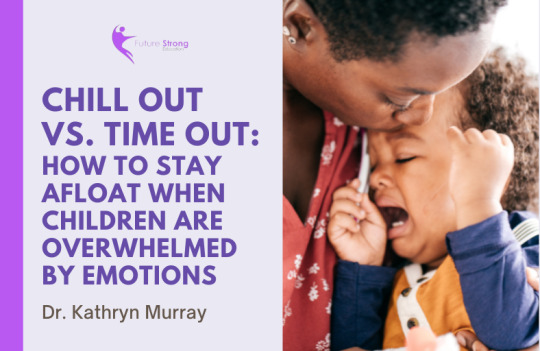
As parents, we feel that way at times and can usually find ways to manage it, such as going outside or for a walk. But what happens if you are a child and don’t know how to calm down?
Most of us know that there are two hemispheres of the brain.
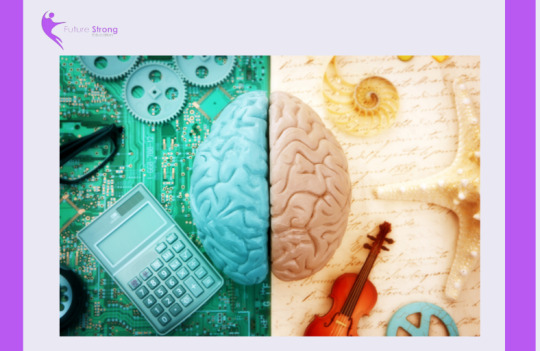
The left side likes logic, lists, and is very linear and rigid in thinking. The right side is emotional, creative, spontaneous, and a little chaotic. Trying to navigate between both sides can be tricky.
Dan Siegal suggests that to have a happy life we should float down a River of Wellbeing.
Imagine the river banks are connected to the way we think and behave - the left bank is rigid in thinking, and the right bank is chaotic.
Young children (and adults at times) find it difficult to keep to the middle of the river and often use a zig-zag approach. When children veer close to the left, rigid bank they become sticklers for the rules of a game. As they veer toward the opposite bank they become more chaotic and switch from the rule maker to throwing a giant tantrum. It takes maturity and practice to float down the middle of the river and still stay connected to both banks so that thinking can be both logical and creative.
In my experience, children become overwhelmed by emotions and drift to one side of the river or the other because they are trying to fulfill an emotional need. The trouble is that sometimes the way they choose to respond or fulfill that need is not appropriate or effective. Sometimes those emotions children are trying to manage can end up being out of control.

Research tells us that as emotions rise. The fight, flight, or freeze response kicks in fuelled by a flood of the cortisol hormone in the brain. This hormone keeps us on high alert so as humans, we can survive by hitting out or being verbally abusive (fight), running away (flight), or not talking at all and avoiding the whole situation (freeze). This means that conversation or reasoning cannot physically occur while we are in this heightened state of being alert.
Have you ever seen a child have a tantrum – yelling, crying, screaming, throwing things, stamping their foot, and more? This is due to the overwhelm of emotions and the high level of cortisol swimming through the brain. This is not the time to try and have a rational conversation or explain the consequences of actions. This is the time for a cuddle, space, and some ‘chill out' time.
Giving your child (and you) the space and time to ‘chill out’ and calm the brain, allows emotions to settle and the opportunity for thinking to happen. The level of cortisol created by the body when under stress (from an argument, tantrum, being anxious and other reasons) increases and impacts clear thinking in the brain. Sometimes we call that foggy brain. Taking some time in a ‘chill out’ space gives the brain time to settle, the cortisol level can drop, the sense of safety and security increases and we become calm. That’s the time to go and quietly have a discussion about appropriate behaviors or what might be worrying your child.
Ways to help the calming of emotions include creating a ‘chill out’ space in an area of your home. It’s a space that is removed from everyone (the corner of the living room) but not isolated (a bedroom). This is a safe space for refuge and respite where children can settle and compose themselves so that a conversation can occur. It works well if there are different textures in the space so that it is a sensory experience that helps to calm emotions.

As a parent, remember you need to do this too. You can model the need to take a break from a situation. Use the Think Aloud strategy and say “I’m feeling a bit annoyed. I’m going to ‘chill out’ for a few minutes”.
‘Chill out’ is not ‘time out’ and it is NOT a punishment - it’s a strategy to strengthen family relationships by recognizing the need for calm brains to help compassionate communication and keeps you floating in the centre of the River of Wellbeing.
-----------------------------------------------------------------------------
Reference:
Siegal, D. & Payne Bryson, T. (2017). The whole-brain child: 12 revolutionary strategies to nurture your child’s developing mind. Victoria: Scribe Publications.
#child temper tantrum#how to deal with tantrums#earlychildhoodeducation#earlydevelopmentchildhood#earlylearningchildhood#earlychildhood#learningathome#parenting#parenting tips
1 note
·
View note
Text
Recognizing the Face of Trauma
Like classroom interactions and behaviors, trauma comes in all shapes and sizes. There is no 'one size fits all'.
How do we know if extreme childhood behavior is caused by traumatic events, anger, frustration, or the children just learning to self-regulate?
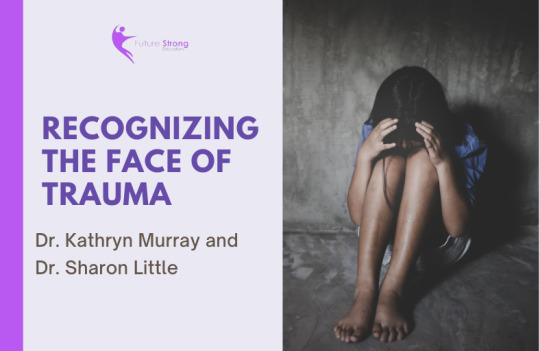
In this article we explore what trauma is, how it might look, and the impact on a child’s social, emotional, physical, and cognitive abilities as you read on.
Trauma has always existed, and now it’s time to share how we can support children who have been traumatized before, during, and after a pandemic.
What would you do in this real-life situation?
Charlie is an outstanding third-grade student—he excels in his assignments, loves reading, and easily makes friends in the classroom. Ms. Smith, his teacher, calls Charlie one of the “best” students she has ever had in class throughout her teaching career.
Over time, however, something changed—Ms. Smith notices extreme changes in Charlie. He has become extremely aggressive towards her, and his classmates. He lashes out with his fist, words, non-verbal gestures, throws things and no longer participates in any group learning sessions. His whole personality has changed.
Finally, after Charlie physically bruises two of his classmates during an outdoor time, and lunges at Ms. Smith in an overaggressive way she knows that something needs to be done. As what she feels is the last resort, Ms. Smith speaks with a school counselor concerning the patterns of behavior she has observed in Charlie for the past month.
Mrs. Blue, the counselor, speaks with Charlie, who remains silent.
After several weeks of silence, Charlie shared something with Mrs. Blue that explains the aggression—Charlie saw a relative shot in front of him and watched him die. He has been struggling to process this incident.

The trauma and the child
This story is true.
While many educators see varying classroom behavior, misbehavior is hard to ignore. Discovering the “root” cause of the behavior is essential as Mrs. Blue demonstrated in the story.
Trauma can take many forms that can include:
a change in social behavior – keeping to themselves and not playing
becoming overly quiet
uncharacteristic boisterous behavior
aggressive behavior – shouting, hitting, throwing, punching
running away
crying without an obvious reason
being clingy to familiar people
being distant from familiar people
looking sad
emotional outbursts
taking things that don’t belong to them
Although this list may leave us thinking that the outward evidence of trauma covers all behaviors, there are ways to identify when a child is enduring the pain of trauma and find the “root” of the problem. Has the behavior changed recently, is it uncharacteristic, do we have a feeling that something is not quite right?
Behaviors can be induced by primary or secondary trauma. In the story, Charlie wasn’t the one-shot but his witnessing the incident produced traumatic fallout that was exhibited in the classroom.
Primary trauma can occur if the child is personally threatened and is frightened, becomes sick, goes to a hospital, or worse, thinks they may die. This is trauma that impacts the child in a real and personal way. We hear of veterans experiencing Post Traumatic Stress Disorder (PTSD) for years after the traumatic events of war where they are literally in a life or death situation (Gluck, Mercado & Myers, 2016). This is the effect trauma can have on an adult’s brain. Imagine how that is for a child.
Secondary trauma can be triggered by observing others being hurt or feeling the fear of violence not associated with the child. Recently triggers could be the impact of COVID-19 on the family. Unemployment, financial stress, at home for extended periods during the lockdown, relatives that may have passed away because of Covid. Again, there is tension, residual grief, the lack of social interaction, isolation, and more (Motta, 2012).
The brain and trauma
Trauma affects the brain in several ways. One of these ways is that the fight, flight, or freeze responses are heightened. Children are on ‘high alert’ assuming danger will take place at any time. This can be exhausting, and children may feel tired, irritable, and unable to focus or function well.
The fight (yell or hit), flight (run away), or freeze (can’t speak or move) responses occur when the mammalian part of the brain, which includes the limbic system takes control. Emotions are stimulated in this part of the brain with links to the brain stem, the survival part of the brain. If a child feels frightened the brain stem gets the legs moving to run away from the situation to survive (Nagel & Scholes, 2016).
Imagine being in this state all of the time - the brain can’t relax, regulate or work out if it is safe or under threat.

The teacher
The classroom climate or tone that the teacher sets is important for establishing an environment in which children know they are safe, feel accepted, and can engage in learning. Some ways to create a positive classroom space includes:
Keep firm but fair routines and structures and give a warning about any changes
Instill calmness into the classroom by using a calm and quiet voice
Include nature – bring plants into the classroom or include cane baskets
Take some learning activities outside
Use a visual timetable so that children can see where they are in the day
Allow children to work alone or in well-chosen pairs
Provide smaller spaces in the classroom so children can have some ‘me’ time
Having fun in the classroom, sharing a joke, laughing, playing a game before recess, sharing personal stories helps to lighten the tone of the classroom and build connections between the children and teacher. This promotes a sense of belonging and security and calms the brain.
The needs of the teacher cannot be overlooked in this context either. Taking care of self is of utmost importance. It’s like when traveling on a plane – the safety warning is to first put the oxygen mask on yourself, then others you are traveling with. It is the same concept here. Self-care and self-love are important for everyone. Take time out in nature, listen to music. Do what makes your heart sing.
The parents
Parents may be undergoing the same types of primary and secondary trauma as their children. As a teacher, assuming that parents can take over once the children go home could be very short-sighted. Many of the same support processes mentioned above for children apply to parents too. Ensuring that parents have a support network, interact socially in non-threatening spaces, have a routine, and don’t take on anything that causes stress is important. Maintaining regular communication with families not only offers support but also allows the teacher to see warning signs of needed further help.
The outside agencies
Social workers, counselors, members of the faith (priests, rabbis, ministers), psychologists, guidance counselors, and other support personnel can support traumatized children and families in various ways. Each support person has their own unique approach. Having a team approach to alleviate the effects of trauma before, during, and after the pandemic is under control, is a priority to ensure that children grow into healthy, happy, and productive adults. Teachers involved in a team approach feel supported and part of a community. Therefore, additional support can be provided to the professionals involved, the children, and families.
As teachers, our overall aim is to provide an environment in which children feel safe to allow them to thrive in our classrooms and perhaps have some respite from the outside world. This means taking care of ourselves first, so we can take care of the children.
------------------------------------------------------------------------------
Who is Dr. Kathryn Murray?
Dr. Kathryn Murray is an early childhood pedagogical expert and creator of the Brain-SET Formula© for Classroom Design. She is the CEO of Future Strong Education - a global early childhood consultancy organization based in Australia. Kathryn supports educators and parents to give children the best possible start in life. Find Dr. Kathryn Murray at www.futurestrongeducation.com or connect with her through [email protected].
Who is Dr. Sharon Little?
Dr. Sharon Little is an early childhood program lead and faculty in North Carolina. She is also a project coach, trainer, private early education consultant, speaker, and strong advocate for early childhood education. Sharon supports early educators, the community, and other early childhood professionals in trauma-informed, developmentally appropriate practices, diversity, and higher education subject matter. Find Dr. Sharon Little at Linkedin here.
------------------------------------------------------------------------------ References:
Gluck, M., Mercado, E., Myers, C. (2016). Learning and memory: From brain to behaviour (3rd ed.). New York, USA: Worth Publishers.
Motta, R. W. (2012). Secondary trauma in children and school personnel. Journal of Applied School Psychology, 28:3, 256-269.
Nagel, M., Scholes, L. (2016). Understanding development and learning: Implications for teaching. Melbourne, Australia: Oxford University Press.
Suggested Resources:
Nicholson, J., Perez., L, and Kurtz, J. (2019). Trauma Informed Practices for Early Childhood Educators. New York: Routledge, Taylor & Francis Group. ISBN 978-1-138-30639-4.
#learningathome#educationmatters#educationisthekey#earlydevelopmentchildhood#earlylearningchildhood#earlychildhoodeducation#earlychildhood#education#learning#earlychildhoodeducator#trauma#childhoodtrauma#signs of trauma
1 note
·
View note
Text
The Big-Picture Gifted Child: Making Connections
Gifted children experience the world in unique ways.
Understanding their natural aptitudes and considering how they learn can cater to the strengths of gifted children and accommodate their preferences.
It is part of a teacher’s responsibility is to activate their unique learning style (Malvik, 2020.)

The big-picture gifted child
Even in the early years, a preference for big-picture learning may be observed in gifted toddlers.
Have you observed children who are slow to reach developmental milestones because they do things when ‘they master the whole’?
Those with delayed speech may be practicing words mentally for quite some time, before suddenly surprising everyone by starting to talk, using whole sentences. They may have already built up a large vocabulary and then be capable of holding a substantive conversation with adults.
Another example is where they may muddle along with training wheels on their trike for a long time, but all at once, master the art of cycling. These children develop at their own pace, not necessarily fitting in with the accepted norms (Lammers van Toorenbury, 2020).
At school, big-picture learners adopt a conceptual, holistic style of learning: understanding concepts as a whole, before plotting in smaller pieces of information.
As a result, details can be missed, or even considered inconsequential. These children can easily follow complex directions, talk in compound sentences, and invent original ideas and solutions (Porter, 2009). They learn intuitively: some of their thinking happens at a preconscious level. They learn instantly: a dislike of routine work and repetition creates boredom. They learn with a purpose: they want to know where this learning will be useful.
These children want ‘to connect the dots'.
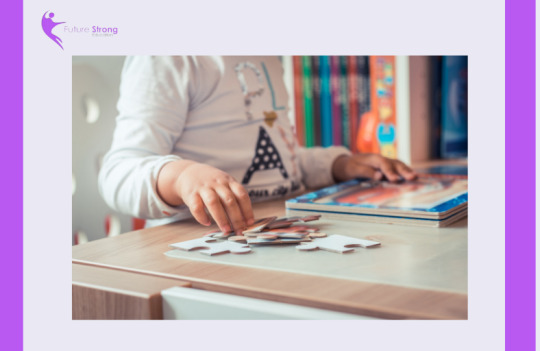
Making connections
Making connections, by synthesizing ideas and concepts, is a forte of big-picture gifted children.
Their thinking often takes unexpected pathways. Making connections leads to ‘if-then’ reasoning – asking ideological questions even at a young age. They may develop a quirky sense of humour arising from their unusual imagination and their ability to match things together. Their drawings may appear unusual; but when asked, they give extensive stories to explain the connections. Their spatial awareness may be so developed that they visualize local maps in their head, so they are not easily lost.
Dr Louise Porter (2009) also suggests that big-picture gifted children may have difficulty learning to read phonetically and/or be poor spellers (p.3). Sounding out letters may appear boring, but recognizing words can be exciting, especially when they relate to their areas of interest. These children read contextually, where words fit into the whole and gain meaning from their placement in the sentence and paragraph. Comprehension depends upon word recognition and how words relate to each other.
Because big-picture gifted children learn instantly and understand concepts holistically, they may develop imposter syndrome when faced with challenges. If their initial attempts to perform tasks are not met with instant success, they may give up, thinking that they are incapable of doing that work. Without an understanding of how they learn, they may conclude that they have become less skilled. Building resilience and teaching perseverance will build their self-esteem and help overcome the fear of being an imposter.
Most curricula are based on a sequential approach: but big-picture gifted children find it difficult to learn by this method. Because their learning style does not match the typical teaching style, they may be assessed as having learning difficulties, or be accused of laziness, or even have their giftedness questioned. Gifted children are not broken. They need support to develop resilience. They need scaffolding to find the next step when they become stuck. They need accommodation for their strengths and permission to work backward. They need a flexible curriculum that caters to their learning style.
Teaching approaches with the big-picture gifted child
The big-picture child sees the world from a higher perspective than other children and perhaps the teacher. Providing learning that is more project-based allows all children in the class to follow their interests whilst addressing curriculum requirements. Making connections between concepts and not being hung up on the details allows the big-picture child to make progress in their work, see success and develop a process that maintains interest. Although this sounds good, the gifted brain can become overwhelmed by the big picture. It’s important for the teacher to facilitate authentic conversations to help the child break down the big concept into manageable chunks or parts. This is the whole–part approach (Duncan, Goodwin, Haas, and Wilson, 2021).
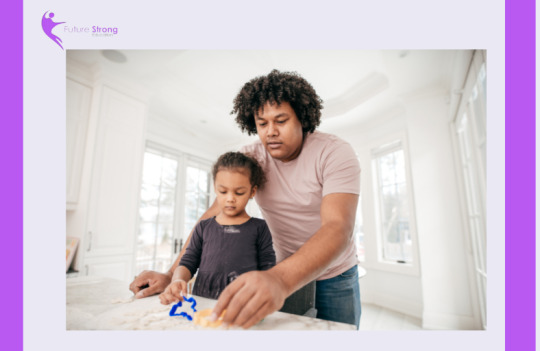
Although the gifted child may develop ideas and concepts that are more advanced or have a slightly different approach to other children, there are similarities to their peers when using a project learning approach in the classroom. The fact that everyone is working on a project stimulated by a problem-based question related to their interests, means that the gifted child feels as though they fit into the classroom culture.
The gifted child creates their own trajectory for learning, just as every other child does who is engaged in their own project. Assessment goals and the journey of learning become transparent, as curriculum outcomes are achieved and can be outstripped. The development of self-assessment goals allows the big-picture child to find their own way to reach their goal using the whole-part structure.
Along the way, it is important to celebrate the milestones that are accomplished when working toward predetermined goals – these are the ‘parts’ that have been identified that, when drawn together, make up the ‘whole’ concept. This boosts self-esteem and provides opportunities for the gifted child to reflect and pause, rather than rush ahead in their project. It also allows the child to review, recalculate and reinvent some of the steps that they may have taken. This encourages them to see that there is more than one way to approach a project.
An awareness that develops those different approaches can reach the same goal. In turn, they can be more empathetic, accommodating, and accepting of methods used by other children who may not be gifted.
Encouraging the use of technology for research or creating special effects enhances the development of the final product. Multimodal experimentation and implementation to address the curriculum requirements extend the learning throughout the project. The use of technology allows the gifted child to share ideas publicly and energize the learning of others. Adding in other forms of demonstration, such as art, writing, construction can contribute to the overall expression of learning through the completion of a project that has a real-life application that is of particular interest to the big-picture gifted child.
In this way, the gifted child is coached to look at the components of their big-picture concept, review them and draw them together to achieve their overall goal. This builds self-esteem, a sense of accomplishment, self-confidence, social and emotional resilience through sharing concepts and goals with others.
------------------------------------------------------------------------------
Who is Dr. Kathryn Murray? Dr. Kathryn Murray is the founder of Future Strong Education, a consultancy business working with teachers, leadership teams, early childhood educators, organisations, and parents. Kathy has a professional background that spans 36 years in the education sector. Her aim is to extend each person’s personal and professional capabilities by sharing current research and a range of experiences and skills gathered over her career. Kathy speaks at conferences, provides professional development sessions, and mentors clients nationally and internationally while continuing to share her expertise with pre-service teachers at Central Queensland University. The life aim of ‘making a difference in the lives of children' is what fuels Kathy’s passion to provide support in the world of education.
Kathy’s qualifications include Doctor of Education, Master of Education, Certificate IV in Training and Assessing, Bachelor of Education, Diploma of Teaching (Preschool/Primary).
Who is Gloria van Donge? Gloria van Donge is a mother of a gifted child, but she only discovered this in her retirement! If only she had known earlier when her children were small! To help other parents and educators, Gloria has written five picture books to create a doorway into the world of the gifted and talented child. Her stories cover pertinent issues like acceptance, camouflaging behaviour, perfectionism, being out-of-sync with peers, and emotional giftedness. As an international author, it is her hope that these stories will generate discussion and contribute to the social and emotional wellbeing of the gifted.
Gloria’s qualifications include Bachelor of Arts, Bachelor of Arts in Biblical Studies.
------------------------------------------------------------------------------
References related to this article:
Duncan, S., Goodwin, C., Haase, J., Wilson, S. (2021). Neuroscience of Giftedness: Increased Brain Activation. https://www.gro-gifted.org/neuroscience-of-giftedness-increased-brain-activation/
Lammers van Toorenbury, W. (2020). Hoogbegaafdheid, Signalen en Handvatten. Retrieved from https://hiq.nl/meer-over/
Malvik, C. (2020). 4 Types of Learning Styles: How to Accommodate a Diverse Group of Students. Retrieved from: https://www.rasmussen.edu/degrees/education/blog/types-of-learning-styles/
Porter, L. (2009). Gifted Children: Meeting their Needs. Hong Kong: Asia Pacific Vision.
#learningathome#learning#teachers#pandemic#educationmatters#education#educationisthekey#earlychildhoodeducation#earlychildhood#earlychildhoodeducator#earlydevelopmentchildhood#earlylearningchildhood#gifted child#futurestrongeducation#how to teach gifted children#gifted child needs#big picture#tipsforteachers
0 notes
Text
The Rage-to-Learn Gifted Child: Meeting Their Needs
Do you observe your baby being extra alert and attentive to their environment?
As toddlers, their conversation skills and counting ability begin early and their questions seem endless.
These could be early indicators of a 'rage-to-learn' gifted child.

The ‘rage-to-learn’ gifted child
Gifted children, with rage to learn, have an internal motivation that propels and compels them to explore, to investigate, to learn.
They are quick to recognize things like traffic signs, advertising logos, car brands. Their curiosity and insatiable hunger for learning seem unstoppable (Lammers van Toorenbury, 2020).
In the introduction to his book, Bright, Alan Thompson (2016) says, “It’s not possible to graph your child’s passion for counting absolutely everything including nutritional information on food packaging, or their motivation to learn to read the newspaper at the age of two.” (p28).
These children crave new ideas, new challenges, and new experiences. They love complexity and are willing to take a risk. They immerse themselves in an area of interest, showing intense focus and concentration. They have an amazing capacity for facts and figures, processing information quickly and efficiently. They are independent and show high self-efficacy, passionately pursuing their own goals. At home, they invent and develop all kinds of activities. Their focus is more on the process than the product.
A local three-year old surrounded himself with sticks, cardboard, wood glue, lawnmower parts and other odds and ends. When asked what he was doing, he scoffed, “I’m making the making!” (Downie, 2014, p24).
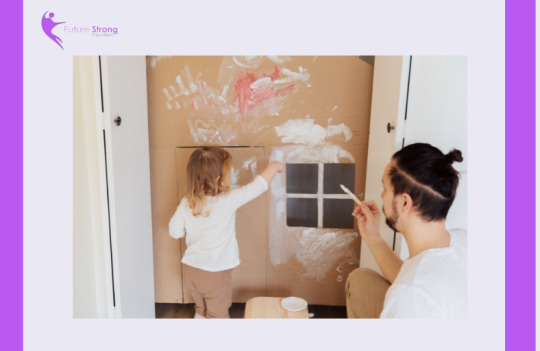
Rather than being forced into the rigidity of a system, these children need their own learning line.
In the classroom, the ‘rage-to-learn’ gifted child may present a challenge because their learning is motivated by their own interests: they do not learn in order to pass a test. They are driven by task involvement with a goal of mastering skills, rather than being powered by performance goals measuring their ability to succeed. These children like to work autonomously and when learning is disappointing, they lose their sense of purpose and disengage in the classroom. When the work is too easy, they lack persistence and fail to develop study skills. They may develop signs of anxiety, like health concerns and not wanting to attend school.
Meeting their needs
If the needs of ‘rage-to-learn’ gifted children are not honoured, then behavioural challenges may emerge. Those who see themselves as intellectual peers of their teachers often reject authority and become argumentative. Their endless questioning converts into tireless negotiations when given adult directives. Being told what to do or think may insult these children and lead to outrage. As non-conformists, they may develop a critical mindset, intolerant of others and their own shortcomings (Betts & Neihart, 1988).
Being out-of-sync with their peers, the gifted child may be subjected to bullying. A study conducted in eleven states of America discovered that 67% of all gifted students were bullied by 8th grade. The vast majority were silent about this (Peterson, 2006). Depression, unexpressed rage, and school absenteeism may alert teachers to this situation. Some gifted children deal with the emotional impact by becoming bullies themselves.
The teacher
In a classroom of 25 or more children, it can be difficult for the teacher to notice and identify a ‘rage-to- learn’ gifted child. Often, the outward behaviours are noticed and responded to in ways that may not always be conducive to the gifted child feeling ‘seen’ and ‘heard’ by other children or the teacher. The competing expectations placed on the teacher by the school administration, parents, and the needs of all children in the class can be very overwhelming and stressful. Including children with special needs or gifted children in the mix can be problematic. It is easy to see why the gifted child’s behaviour and engagement with learning can be compromised.
Unless teachers have received training in identifying and facilitating the learning of gifted children, there may be a disconnect in the classroom. Generally, teachers do their best to teach to individuals and accommodate their needs for learning. Considerations of all developmental domains – social, emotional, physical, cognitive and language are part of the teacher’s focus for all children in the classroom. Curriculum requirements, participation in school committees, sporting teams and the like all add to a teacher’s daily responsibilities. A classroom is a busy place with many competing priorities.
Classroom considerations
Another layer for the teacher to address is that gifted children are renowned for hiding their giftedness in an effort to fit in with peers and form friendships. Setting up a classroom culture that honours individual learning approaches in a safe emotional space is essential for all children, but especially the gifted child.
A classroom designed with a range of smaller learning spaces provides the feeling of ‘psychological safety’ (Kirby, 2021). Smaller spaces are less threatening. They allow for greater focus on tasks, encourage intimate conversations with 2 or 3 others, and minimize potential self-regulation issues. Well-planned and designed spaces allow children of all abilities to enter into the learning at their own level. A gifted child could well be exploring ways of using ‘loose parts’ alongside a child with a disability. In this instance, Vygotsky’s Zone of Proximal Development theory suggests that the more experienced or skilled child can guide the other in a peer tutoring approach (O’Donnell, 2012). This method supports the development of self-regulation and impulse control by managing social and emotional development.
Having an ‘assets-based learning’ approach focuses on valuing existing knowledge and strengths which supports strong self-esteem and identity development (New York University, 2020). When children feel comfortable and accepted, instances of disruptive behaviour or bullying disappear. Diversity in thought, culture, and traits are seen as assets to learning. Strengths of teachers and children are valued with the focus being on what they bring to the classroom rather than their differences and deficits.
Encouraging self-determined, assets-based projects that respond to the requirements of the curriculum provides the gifted child with autonomy and considers their interests. In turn, thinking and imagination are extended to their individual level. Having open conversations where the gifted child feels safe to be vulnerable and authentic can promote engagement with the learning and provide psychological security.
Changing the language in the classroom from ‘teacher’ to ‘coach’ or ‘facilitator’ helps to change the mindset and subconsciously builds more equity between the children. Being a coach in the classroom can be aligned with being a sporting coach. The role changes from leading and telling to providing advice, giving opportunities to practice skills, and then allowing the individual to do his or her part in the team.
If this approach is used in a classroom designed with many smaller spaces, children can ask for individual advice, practice their skills and then share with the larger team. Then, learning is fulfilling for each child – no matter what their level of ability. The range of gifted children extends to more that the rage to learn child. Giftedness comes in many shapes and sizes. Each child should be looked at individually where ‘one size fits all’ is not a part of the classroom pedagogical approach.
------------------------------------------------------------------------------
Who is Dr. Kathryn Murray?
Dr. Kathryn Murray is the founder of Future Strong Education, a consultancy business working with teachers, leadership teams, early childhood educators, organisations and parents. Kathy has a professional background that spans 36 years in the education sector. Her aim is to extend each person’s personal and professional capabilities by sharing current research and a range of experiences and skills gathered over her career. Kathy speaks at conferences, provides professional development sessions and mentors clients nationally and internationally while continuing to share her expertise with pre-service teachers at Central Queensland University. The life aim of ‘making a difference in the lives of children is what fuels Kathy’s passion to provide support in the world of education.
Kathy’s qualifications include Doctor of Education, Master of Education, Certificate IV in Training and Assessing, Bachelor of Education, Diploma of Teaching (Preschool/Primary).
Who is Gloria van Donge?
Gloria van Donge is a mother of a gifted child, but she only discovered this in her retirement! If only she had known earlier, when her children were small! To help other parents and educators, Gloria has written five picture books to create a doorway into the world of the gifted and talented child. Her stories cover pertinent issues like acceptance, camouflaging behaviour, perfectionism, being out-of-sync with peers, and emotional giftedness. As an international author, it is her hope that these stories will generate discussion and contribute to the social and emotional wellbeing of the gifted.
Gloria’s qualifications include Bachelor of Arts, Bachelor of Arts in Biblical Studies.
------------------------------------------------------------------------------
References related to this article:
Betts, G. and Neihart, M. (2017). Profiles of the Gifted, Talented, Creative Learners. https://uncw.edu/ed/aig/documents/2017/profiles%20of%20the%20gifted%20talented%20and%20creative.pdf
Downie, R. (2014). Making the Making. Kids on the Coast. Education, May-June, pp24-30.
Kirby, A. (2021). How do we build psychological safety- in the context of neurodiversity? https://www.linkedin.com/pulse/how-do-we-build-psychological-safety-context-prof-amanda-kirby/
Lammers van Toorenbury, W. (n.d.). Hoogbegaafdheid, Signalen en Handvatten. https://hiq.nl/meer-over/
New York University, Steinhardt. Thought leadership. An Asset-Based Approach to Education: What It Is and Why It Matters. September 2020. https://teachereducation.steinhardt.nyu.edu/an-asset-based-approach-to-education-what-it-is-and-why-it-matters/
O’Donnell, A. M. (2012). Educational Psychology. Milton, Queensland: John Wiley and Sons Australia.
Peterson, J.S., & Ray, K.E. (2006). Bullying and the gifted: Victims, perpetrators, prevalence, and effects. Gifted Child Quarterly, 50 (2), pp148-168. https://journals.sagepub.com/
Thompson, A. D. (2016). Bright: Seeing superstars, listening to their worlds, and moving out of the way. Life Architect.
#learningathome#learning#teachers#pandemic#educationmatters#education#educationisthekey#earlychildhoodeducation#earlychildhood#earlychildhoodeducator#earlydevelopmentchildhood#earlylearningchildhood#gifted child#rage to learn#futurestrongeducation#how to teach gifted children#gifted child needs
0 notes
Text
Happy Children: Why Social and Emotional Wellbeing is Important for Learning
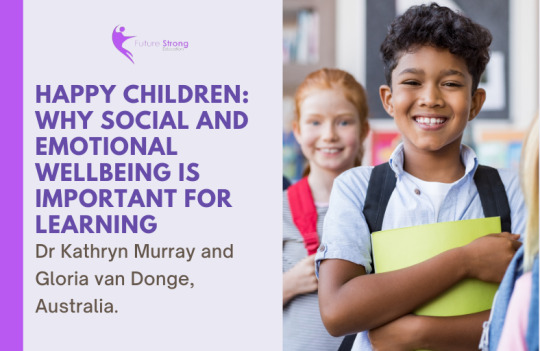
Have you been in a situation where someone talks incessantly as a monologue? Have you had difficulty controlling your emotions, had no interest in talking to someone, or had no inclination to take a risk and try something new?
Does it seem like everyone else seem happy and in relationships that thrive, and you don’t?
You could be low in social and emotional wellbeing.
You might have noticed that some people naturally ‘read the room’! They regulate their emotions, build strong relationships, make good decisions, and feel good about themselves. Having a strong sense of social and emotional wellbeing leads to better opportunities for learning.
In 2005, research suggested that happiness is determined 50% by our genes, 10% by our life circumstances, and 40% by our life choices and behaviours. Whilst more recent research debates these percentages, the premise remains that we can influence our happiness.
Socially and emotionally stable children come to school prepared to learn. As a parent or teacher, it is crucial to teach and encourage children to develop strategies for life that will support a strong sense of social and emotional wellbeing that provides the opportunity for greater happiness.
This is where social and emotional development linking to mental health comes in.
Social and Emotional Wellbeing Leads to Better Opportunities for Learning
Socially and emotionally stable children come to school prepared to learn.
Building social and emotional wellbeing (SEW) and social and emotional learning (SEL) opportunities have been shown to decrease the rates of depression, suicide, eating disorders, stress, antisocial behaviour and the like.
A positive sense of self, developed through SEW and SEL activities, has been linked to adult productivity, success and happiness. Building competence in social and emotional wellbeing provides a firm platform for the development of social and emotional learning.
Children feel good about themselves so are willing to take a risk in their learning; have a go at that mathematics problem, ask for help to complete an activity, and bounce back when something is completed incorrectly.
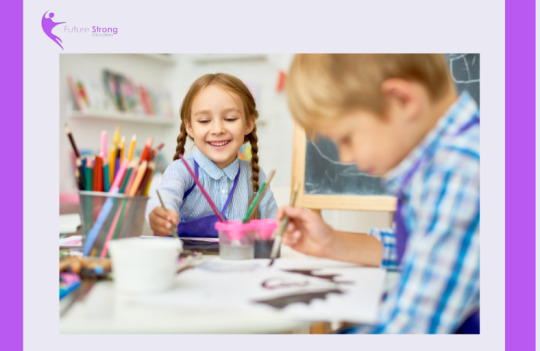
Classroom and family discussions that lead to developing strong mental health begin by giving descriptive feedback, identifying emotions or using a story to begin conversations about characters and feelings. Developing self awareness, self management, social connections, and acceptance of self are all part of the journey to wellbeing and learning. Embracing social and emotional wellbeing leads to higher social cohesion within families, classrooms and communities in general, which in turn builds social capital and positive futures for children.
Social and Emotional Wellbeing (SEW) and Social and Emotional Learning (SEL) are the cornerstones of rich learning in cognitive, physical and language developmental domains.
5 Core Goals for Development of Wellbeing in Schools
The Collaborative for Social and Emotional Learning (CASEL) has identified 5 core goals for development of wellbeing in our schools. The goals highlight the importance of social and emotional wellbeing and learning and what it might look like in our classrooms.
Self-awareness — identifying and recognising emotions; recognising personal interests and strengths; maintaining a well-grounded sense of self-confidence
Self-management — regulating emotions to handle stress, control impulses, and motivate oneself to persevere in overcoming obstacles; setting and monitoring progress toward the achievement of personal and academic goals; expressing emotions appropriately
Social awareness — being able to take the perspective of others and empathise with them; recognising and appreciating individual and group similarities and differences
Relationship skills — establishing and maintaining healthy and rewarding relationships based on cooperation and resistance to inappropriate social pressure; preventing, managing, and constructively resolving interpersonal conflict; seeking help when needed
Responsible decision-making — making decisions based on a consideration of all relevant factors, including applicable ethical standards, safety concerns, and social norms; the likely consequences of taking alternative courses of action; evaluation and reflection.
Why We Need to Teach SEW and SEL:
Students lacking in SEW or SEL may find it difficult to follow directions, self regulate their emotions, or interact with others. Social and emotional skills are key determinants of academic success and productivity in the classroom.
Research indicates that students behind in their SE development are:
Up to 80% more likely to need a repeat year,
80% more likely to require learning intervention and support,
And seven times more likely to exhibit difficult behaviour.
A clear outcome from this research is that SEW and SEL are highlighted as being vital to establish positive approaches to individual learning and set students up for success.
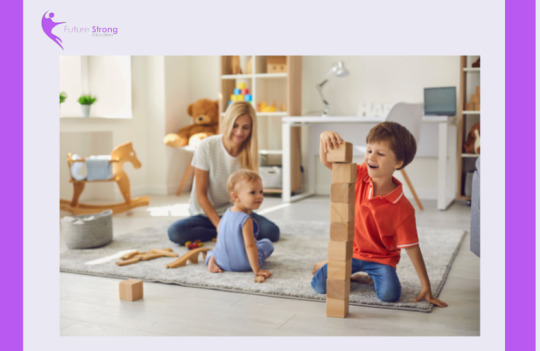
The Student Learning and Wellbeing framework developed by Education Queensland reminds us of the World Health Organisation’s statement that “Wellbeing is a state in which every individual realises his or her potential, can cope with the normal stresses of life, can work productively and fruitfully and is able to make a contribution to his or her community”.
With this in mind, the importance of SEW and SEL is evident for all students, but particularly gifted and talented students who may require further support to understand their unique approaches to the world.
One way to support students, is to use resources that explore the range of social and emotional competencies that are needed to strengthen and support self awareness and acceptance of personal strengths and challenges.
The Gifted Kid Book Series does this in a gentle, entertaining, child friendly manner. The concepts found in each book align with the desired outcomes of education systems worldwide that identify the importance of embracing diversity and the World Health Organisation’s promotion of wellbeing.
Gifted children are good at camouflaging their strengths so they don’t seem ‘different’. Perhaps you have a gifted child in your class or even your family and don’t realise it.
In your class or school, do you have children who:
Seem bored with school so are disruptive?
You think can do better than they do?
Challenge ideas and offer different solutions?
Constantly ask questions to the point of frustration?
Have you considered that they may be gifted?
Perhaps you have noticed that they:
Excel in sports, dance, music, maths, or English
Seem to be very serious and older than their years
Learn quickly and retains what is learned
Think of innovative and creative ways to approach a standard problem
Set unrealistically high standards for themselves
Have intense emotions and seem very sensitive to the feelings of others
All children are to be encouraged to find their own level of SEW which then allows them to access SEL. This is particularly important with children who see themselves as ‘different’ from other children. This is the case with gifted children. The level of social and emotional wellbeing and building strong relationships may be difficult depending on the particular characteristics of the gifted child. The various forms of giftedness and the accommodations made by the gifted child is not in the scope of this paper but is worth considering for future publications.
------------------------------------------------------------------------------
Who is Dr Kathryn Murray?
Dr Kathryn Murray is the founder of Future Strong Education, a consultancy business working withteachers, leadership teams, early childhood educators, organisations and parents. Kathy has a professional background that spans 36 years in the education sector. Her aim is to extend each person’s personal and professional capabilities by sharing current research and a range of experiences and skills gathered over her career. Kathy speaks at conferences, provides professional development sessions and mentors clients nationally and internationally while continuing to share her expertise with pre-service teachers at Central Queensland University. The life aim of ‘making a difference in the lives of children’ is what fuels Kathy’s passion to provide support in the world of education.
Kathy’s qualifications include: Doctor of Education, Master of Education, Certificate IV in Training and Assessing, Bachelor of Education, Diploma of Teaching (Preschool/Primary).
Who is Gloria van Donge?
Gloria van Donge is a mother of a gifted child, but she only discovered this in her retirement! If only she had known earlier, when her children were small! To help other parents and educators, Gloria has written five picture books to create a doorway into the world of the gifted and talented child. Her stories cover pertinent issues like acceptance, camouflaging behaviour, perfectionism, being out-of-sync with peers and emotional giftedness. As an international author, it is her hope that these stories will generate discussion and contribute to the social and emotional wellbeing of the gifted.
Gloria’s qualifications include Bachelor of Arts, Bachelor of Arts in Biblical Studies.
------------------------------------------------------------------------------
References related to this article:
Collaborative for Social and Emotional Learning. (2020). CASEL’S SEL Framework: What are the core competence areas and where are they promoted? Retrieved from: https://casel.org/wp-content/uploads/2020/12/CASEL-SEL-Framework-11.2020.pdf
Loewenberg, A. (2016). New study links kindergarten social-emotional skills to long-term success. Retrieved from: https://www.newamerica.org/education-policy/edcentral/what-transforming-workforce-says-about-developing-childrens-social-emotional-skills/
Lyubomirsky, S., Sheldon, K.M., Schkade, D. (2005). Pursuing happiness: The architecture of sustainable change. Review of General Psychology. Vol. 9 (2) pp. 111–131.
Newman, K. M. (2020). How much of your happiness is under your control? Greater Good Magazine: Science based insights for a meaningful life. February 18, 2020. Retrieved from: https://greatergood.berkeley.edu/
Queensland Government, Department of Education, Training and The Arts. Guide to Social and Emotional Learning in Queensland State Schools. Retrieved from: https://www.wtc.ie/images/pdf/Emotional_Intelligence/eq18.pdf
Queensland Government, Department of Education. (2018). Student Learning and Wellbeing Framework. Retrieved from: https://education.qld.gov.au/student/Documents/student-learning-wellbeing-framework.pdf#search=Student%20Learning%20and%20Wellbeing%20framework
White, F., Hayes, B. & Livesey, D. (2013). Developmental Psychology: From infancy to adulthood (3rd ed). Frenchs Forest, NSW: Pearson.
#social and emotional wellbeing#early childhood development#early childhood education#happy children#kathy murray#future strong education#social and emotional learning#student learning#gloria van donge#australian school#early childhood educator#parenting
0 notes
Text
Education, Mental Health and Learning Post-Pandemic with Dr. Kathryn Murray – TutorEye Edtech Session
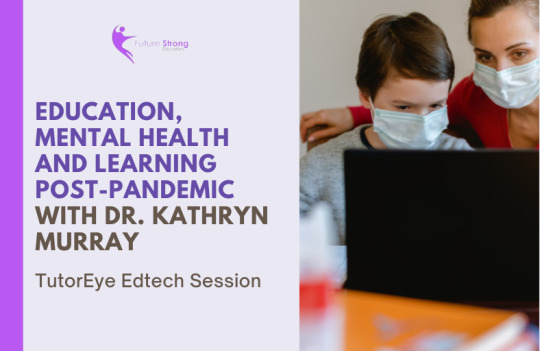
TutorEye, an online learning platform helping students achieve academic goals through expert online tutoring and written help services, hosted yet another successful Edtech session recently with Dr. Kathryn Murray about education post-pandemic.
Below is their discussion with the award-winning early childhood specialist, global speaker, education coach, parent guide, and classroom expert.
What are you working on nowadays?
Kathryn’s response – At the moment, I do a lot of collaboration with various organizations across the world and I’m writing parenting courses for parents to supplement my coaching and courses for early childhood educators to extend their skills. I do a lot of speaking and a lot of professional development workshops.
But one of the biggest things that I am working on right now is writing a book. I have developed a formula around aligning children’s brain development with the way we set up classrooms. I have called it the Brain-SET Formula for Classroom Design©. I’m finding that it’s a long process, but people have been asking more about my process so that’s why I’ve decided to pursue writing the book.
What are your views in general around education post-pandemic?
Kathryn’s response – I think post-pandemic, we are going to see a whole different world and I am not the first person to say this. This is because of homeschooling and the independence that a lot of children have had to use when they are doing their schooling.
I think we are going to see children who are much more self-directed. I also think that a lot of the curriculum achievement standards and the curriculum outcomes that have been predetermined by government organizations and education boards are going to be achieved more organically.
Parents and teachers aren’t going to have the same role either. They are going to be more like coaches and facilitators. They will support children to organically learn things through their own interests but also fulfill the needs of the curriculum.
The curriculum might change. It may be rewritten in the future. A big thing we need to think about too is the level of interaction and human connection that we have all missed out on in the last 18 months. This is particularly important for babies born during this time as well as young children who learn about the world through social interaction. I think a little bit more facilitation with the younger children is going to need to happen as well as the older students in high school.
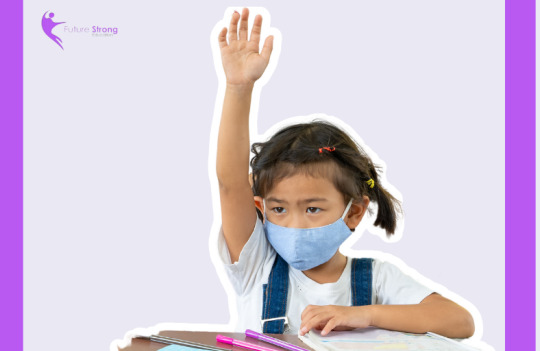
What are the thoughts and correlations you observed in terms of mental health and student learning during the pandemic?
Kathryn’s response - There has been a lot of trauma during this time—both primary and secondary trauma. Primary trauma is something that happens to you while secondary trauma is when you watch something happen to someone else causing you to get upset and traumatized by what you have observed. I think we could all relate to that. We probably have stories about that or might have experienced it in our own families.
Now, when trauma happens, there is a big rush of cortisol in the brain. It becomes difficult for us to think clearly, remember things, and learn things. We call it “foggy brain” and I think it is something that we really need to think about. We need to make sure that children know that they are safe and secure so that their brains can be calm, and they can learn. Mental health, stress, and trauma don’t go hand in hand with learning.
It applies to adults as well. As facilitators, coaches, parents, teachers, and adults we need to be calm around the children or calm ourselves as much as we can so that we can support the students and children to self-regulate their emotions as well. Thinking and learning can occur in a more natural way because the brain is calm.
A calm brain is a thinking brain, and it goes hand in hand.
What are your thoughts about tutoring in general?
Kathryn’s response – I think that tutoring is a big stress reliever. It helps in relieving stress and anxiety straight away especially with TutorEye when you can reach out to somebody and within 3 minutes you are talking to a tutor who is explaining concepts. Basically, holding your hand and helping to calm the brain so thinking and learning can occur.
Understandably, there is a lot of anxiety and stress within the family when children are trying to do their homework and learning online. The children don’t know how to complete tasks and as parents, we don’t know how to help. It’s quite stressful being a parent and being in that situation.
I remember when I had my four children at home, I used to try to do homework with them. I am quite well educated but it got beyond me to support them after a while. I homeschooled for a while too and it was very hard. With children being children, they will always listen to someone other than their parents and we all know this. So, to have someone who is skilled and knows the concepts, and is used to explaining the concepts is very helpful.
I have seen the technology that TutorEye uses with the whiteboards and video and it's not just an explanation. It's a very visual way of teaching the concepts and I think that’s a really important thing. I think given all the things I just said about anxiety, mental health and organic learning, online tutoring goes hand in hand with that.

Throw some light on some of the biggest academic challenges that you faced as a student and how did you overcome it eventually?
Kathryn’s response – The biggest challenge was not knowing what was expected out of me at that time and even during the development of my doctoral thesis as well. I think having a little fairy on my shoulder or someone to call for help (like a speed dial) would have made life a little easier then.
Although there were people I could ask face to face, email, or call, I didn’t want to impose, and they were busy. I didn’t want to be needy, and I didn’t seek help. But it would have helped to have someone that didn’t mind answering my questions at any time of the day.
What would your closing remarks be for our viewers?
Kathryn’s response – I would like to suggest that we start thinking about education in different ways. We should start thinking about facilitating children’s learning in a playful way, in a way that relates to their interests and aligns with their brain development. As adults, that’s the way we learn too. If we are learning something that we are interested in, then it's easy and we don’t forget it. Particularly, when we have experiences with those things that elicit and emotion because we are interested. It’s like cooking a new meal - if you are interested in it and enjoy it then you will remember what to do next time. It might be what to do and what not to do as memory is activated because you are doing something that you enjoyed doing in the past.
As adults, we need to think about ourselves more as facilitators and coaches when it comes to children’s learning. Open our minds and creatively think about all the different ways that education can look.
----------------------------------------------------------------------------
Visit TutorEye's website here: https://www.tutoreye.com/
----------------------------------------------------------------------------
Follow my Tumblr account for more classroom practice and raising children posts helpful to teachers, educators, and parents.
Send me an e-mail through [email protected] to discuss professional development workshops for early childhood educators and/or parent coaching. I work globally online or face to face wherever possible.

#learningathome#learning#teachers#pandemic#pandemicovid19#educationmatters#education#educationisthekey#earlychildhoodeducation#earlychildhood#earlychildhoodeducator#earlydevelopmentchildhood#earlylearningchildhood
0 notes
Photo
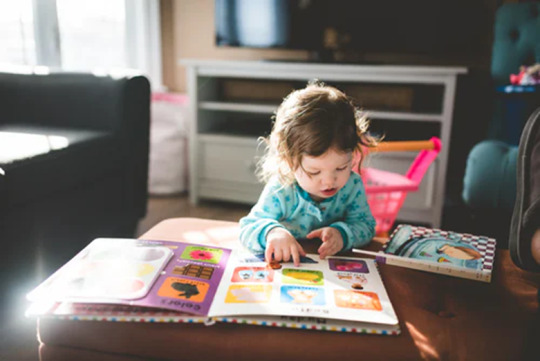
The Brain-SET Formula for Classroom Design © - Designing with the brain in mind.
Dr. Kathryn Murray | Future Strong Education, Australia. | July 2021 An original researched formula for planning the classroom environment.
When I was developing this work, I called my process the Brain-SET Framework for Classroom Design. There was a lot of interest in learning how to design and implement learning in an early childhood classroom. Having consideration for brain science, developmental domains, skill development and relationship building were pivotal to my design philosophy.
There has been much written about how to build a classroom for functionality (art space near the sink, bag rack near the door, cross flow ventilation), convenience, or to keep within a budget. I acknowledge the importance of the physical, built environment but I’ve expanded this thinking to factor in how a child’s brain responds to the physical space and the influence of space on learning.
An early childhood Director asked me to explain my process. I began by saying “The Brain-SET Framework guides educators to set up their indoor and outdoor spaces in a way that is brain friendly for young children.” Her response was “Oh we don’t need yet another framework!” and shut down the conversation. You know what – she was right.
We have all been through multiple changes in education in general and specifically in the early years. The word ‘Framework’ didn’t resonate with my intention of combining research into how children learn, my 40 years of experience, evidence of the success of the Brain-SET design or the changes in relationships that occur because of classroom design factors.
That was a good learning curve for me. After that discussion, I renamed my process for developing built environments to the Brain-SET Formula for Classroom Design, so that it didn’t sound or feel like yet another framework to follow. This is a formula to create and develop successful classrooms, confident teachers and calm, engaged children who learn through playful, hands on, open ended experiences.
I trialled many different approaches in my own early childhood classrooms over 25 years. It was my Masters Research in 2005 that set me on the pathway of learning more about how and why the brain functions and how it influences the way we learn. My passion to find the best way for children to learn was reignited. This was coupled with lecturing pre-service teachers in a university and engaging with mountains of research that set me on the pathway to what is now the Brain-SET Formula for Classroom Design.
What started as a little seed of thought around important elements when designing a classroom environment developed into a full formula that connects with:
· children’s brain development
· the developmental domains (social, emotional, physical, cognitive, language)
· addressing curriculum requirements
· enhancing skill development
· play based learning
· developing soft skills of confidence, independence, creativity, problem solving, resilience and more
· all ability levels can access the learning
· igniting the love of learning for the child and the teachers.
An overview of the Brain-SET Formula for Classroom Design.
The overview of the regions of the brain is simplified here to easily convey the connection between the brain and the decisions made when designing a classroom. In simple terms, the brain has three levels that we have to accommodate when teaching children (actually this is true for people of all ages).
In the title of the Brain-SET Formula, the S. E. T. represents the Survival, Emotional and Thinking parts of the brain.
The brain stem is at the base of the skull and is designed to make sure that we Survive. Our involuntary muscles such as breathing, pumping blood through our heart and body making sure that we can act quickly if we find ourselves in danger. The brain stem responds to how we feel and is regulated in the limbic system.
The Limbic system includes the amygdala and sits halfway up the brain (near the ear) and monitors our Emotions. The amygdala registers how we feel and controls the flight, fight or freeze responses. The emotions are connected to the brain stem to get our muscles moving if we feel scared or threatened and have to run from danger. We may have to use a different strategy to stay safe while facing the danger or play dead to survive.
Once we know we are safe, feel calm and secure then the neocortex comes into play. It is positioned at the top of the brain and is designed for Thinking. When we are relaxed, we are ready to learn and remember. Children and adults who suffer trauma can function and think, but often memory is impaired or straight thinking is compromised because the bottom two areas of the brain have not been considered.
A way to remember this is by using my favourite saying, “A calm brain is a thinking brain” (Murray, 2015). It helps remind us that Brain-SET is important for learning.

©Dr. Kathryn Murray. Future Strong Education, 2021
Classroom Design
The way we design our classrooms can either inhibit or expand on the degree of engagement children have with learning. In the Brain-SET Formula, spaces in the classroom environment are specifically set up to address the areas of the brain, develop skills, build knowledge and encourage the expansion of soft skills such as problem solving, decision making, imagination and more.
When we are addressing the structures of classroom design, we need to ensure that we plan the overall classroom as multiple smaller open ended spaces. The classroom structures include:
1. Design for Learning
2. Feelings for Learning
3. Spaces for Learning
Each of these three learning considerations have 5 or 6 elements that are included throughout the room. The child is always at the centre of the planning and learning and design elements can overlap in several spaces. This is important because it allows children to practice skills over and over until they are ready for experiences that may be a little more challenging or complex. The skilled teacher knows when the time is right to add some complexity into the spaces to encourage skill development or change the focus.
The design elements are related to brain science and child development. The interest of the child is also factored into the planning of the spaces in the classroom. This same concept applies to the outside environment – but in this paper I am focusing just on the inside classroom environment.
Each element in the design process requires planning and deliberate placement of materials to engage and interest the children.
The spaces are not for the children to rotate through but are a part of the classroom every day.
Repetition of skills assists the development of executive functioning skills in the brain that includes the ability to self regulate, adapt learnt skills and knowledge to other contexts and enhance memory.
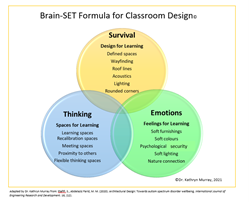
©Dr. Kathryn Murray. Future Strong Education, 2021
The method to set up each learning space and the reasons behind why this is important to build relationships and assist the development of a love of learning is part of my coaching program offered to early years classrooms. The Brain-SET classroom benefits children and educators and include:
· Calmer children and a considerable decrease in behaviour issues
· An increase in oral language by children feeling safer to talk with a smaller group of children in small, well designed spaces
· Smaller spaces that are less threatening for those children who need it, particularly children with special needs
· A variety of seating levels, textures, shapes and materials so that the brain is interested and can be creative and innovative in learning
· Multiple ability entry levels into each space to ensure that all children can access the learning, work independently or with others to develop confidence, self esteem, creativity, innovation and problem solving skills
· Resilience and self regulation is developed through having to wait to be able to access smaller learning spaces.
I work face to face or remotely to take you through the Brain-SET training, followed by focused coaching. I support you every step of the way to set up the classroom and plan for the teaching and learning experiences to unfold in an organised but open ended way conducive with the needs of the developing brain.
If you would like to know more about how the Brain-SET Formula can benefit you and your children, please send me a message or email: [email protected]
It is truly a beautiful thing to see children engaged in learning and educators facilitating and strengthening relationships through mutual goals – all while having fun in the classroom.
Remember: “A calm brain is a thinking brain”.
Warm wishes
Dr. Kathryn Murray.
Reach out to me here…
W: www.futurestrongeducation.com
P: +61 438 776 116
I invite you to connect with me on:
https://www.linkedin.com/in/dr-kathryn-murray-25299314
https://www.facebook.com/futurestrongeducation/?ref=page_internal
https://www.instagram.com/futurestrongeducation/
To learn about my parent coaching program, please email:
To book a complementary call with me, please use this link: https://calendly.com/futurestrongeducation/30min
To enroll in my parenting course, please go to the ‘courses’ tab on the website:
www.futurestrongeducation.com
Dr Kathryn Murray has over 40 years of experience in the education sector. She has 4 happy adult children. Kathryn has written and published numerous articles for teachers and parents in magazines and academic journals. She is a published author featured in the Change Makers book for inspiring women, has won multiple awards for online teaching and was recently named Best Early Childhood Mentor (International, 2020). Kathryn partners with international organisations and community groups to support parents and educators of young children within Australia and globally. She is a highly sought public speaker and workshop facilitator and the creator of the Brain-SET Formula for Classroom Design©.
Kathryn’s aim is to guide parents and early childhood educators to be the best they can be, so that every child has the best possible start to a strong future.
Kathryn’s qualifications include: Doctor of Education, Masters in Learning Management, Bachelor of Education, Diploma of Teaching (Primary/Preschool), Certificate IV Training and Assessment as well as numerous certificates in education based professional development.
0 notes
Text
Let Me Learn My Way
by Dr. Kathryn Murray
I was at an early childhood centre a few weeks ago, mentoring the educators in their classroom. I walked up to the group of children, bent down and said “tell me about what you're learning today, what are you working on?”
A little boy looked up at me and said “you've got grey hair like a grandma”. I laughed because in my role as a consultant I don’t always get that honesty and openness that young children so freely share. It's out of the mouth of babes - as the saying goes. Children have such insight and beautiful ways of expressing themselves. As adults, we don’t always see that. We have so much mind chatter going on: ‘it’s nearly time to pack up’; ‘how will I teach the next session’; ‘are the children too noisy’; ‘what will I make for dinner’; ‘I’ve got no time to get things done’; and more.
If we take a step back and let children express themselves by providing a range of resources and open ended materials they will show us what they know in the way that makes sense to them. It may not make sense to us but it makes sense to them. In doing that, they will learn the skills of creativity, problem solving, decision making, co-operation, communication, negotiation, risk taking and resilience. They will develop, learn and grow because we're allowing them to have a go. The will be preparing for life.
Sadly, our education system now is really geared around achievement, benchmarks, grades, some sort of writing schedule or reading system. The focus is that everybody needs to get things right, do things properly, be correct, and yet it's through mistakes that we learn. It’s through making a mistake that we evaluate, we assess and we recalibrate and try again. Surely that's the best outcome that we could hope for - the process of learning and the skills learnt along the way.
Think about when you cook a meal and you make it up as you go along. You just throw in ingredients, and sometimes it turns out well and sometimes it doesn't. However it turns out, you will rethink this and when you cook it the next time, you'll either remember to put in the same ingredients or add something different or you will do something totally different altogether. We do that all the time. We readjust and we adapt to the situation that we find ourselves in, and yet we often expect children to do things correctly the first time.
As John Medina says in his book, Brain Rules, children are born natural explorers. They come to us with curiosity and creativity bubbling through them. As they grow older, they get educated out of being creative. So what does that say about us and our obsession to have things right, our obsession for children to reach benchmarks and gain new ideas, new knowledges that are important to us and in our timeframe.
What if we offered children opportunities to explore and grow their skills in their own way and at their own pace....we might be surprised at what can be achieved!
Reach out to us at Future Strong Education if you would like to discuss how we can support your early childhood teams or parents at your centre.
#creative #openendedlearning #play
0 notes
Text
Who Do You Think You Are? Classroom and Family Approaches to Life and Learning.

Dr Kathryn Murray
Have you ever noticed that people approach an activity or task the same way time after time? I call that the ‘repeat approach’ and it happens because we all have a default way of thinking and approaching situations.
Research that I conducted several years ago highlighted to me that we generally work through problems and toward solutions the same way, over and over - and only vary from our default approach if the situation really pushes us that way.
My research was done when I was still a teacher in my early childhood classroom teaching young children and connecting with their families each day. I wanted to learn more about why people do the things they do, so that I could add to my own teaching practices. But what I found was even more exciting. I learnt that there are 4 default approaches to learning and completing a task.
Most people have heard of the three learning styles: visual (seeing an image or example); auditory (listening and following instructions); and kinaesthetic (doing and learning through a hands-on approach). Or maybe you’ve heard of Gardner’s Multiple Intelligences that identify people’s strengths. These are based on the way we think, and problem solve.
A learning approach is how we go about things practically to support our learning. Generally, we have a dominant approach, but we can draw on another approach depending on the situation. You might be someone who is exact, logical, like real life and relevant learning, or are very passionate about what you do.
This guide may help you to understand who you are and why – it also helps us to understand our partners and our children. I have 4 children and after doing this research I finally realised why my youngest son drives me crazy asking a million questions, while his brother prefers to do things with his hands and wants to know the purpose of anything he’s asked to do, my daughter is so dramatic and animated in everything she does, and her older sister has to have a list (or multiple lists) to follow.
I had one of each in my family!! Finally, I understood them more and understood myself too! I worked out why they do what they do and why I react at times. We developed a better understanding of each other and also knew who to ask if we wanted a list or spreadsheet as she got older, or who could tell the best story. This understanding and appreciation of each other helped our family’s unity. It might help you and your family too.
The 4 approaches came from my classroom research and my family research. This is a snapshot of what the 4 approaches might look like and gives you a hint of how you could connect with the people who default to these approaches.
Exact
Wants all of the information, asks a million questions and expects a real answer, collects all of the brochures or conference handouts – even if they are never read, good at the game Trivial Pursuit, likes to show what they know by writing rather than speaking, would much rather an essay than an oral presentation, takes detailed notes when learning.
Logical
Likes to be given directions that are clear and logically presented, likes a shopping list, can’t deal with changes to plans, likes to see an example and know what’s expected, likes to have the time to do a job well.
Real Life
Doesn’t really like to take notes or write information, likes to solve a problem by trial and error, needs to see the purpose for doing or learning something, might appear not to be listening because they are fiddling with something to keep their hands busy.
Passionate
Gets frustrated if they have to follow someone else’s plan or ideas, doesn’t like a lot of rules, uses imagination and explores possible ways to do things, would rather act something out or tell a story than write it, feels strongly about what they are doing.
(Adapted from Johnson, C. (1994). The Let Me Learn Process)
This helped strengthen my family and it also helped me to build stronger relationships and connect more to the children in my class. We were very transparent about our approaches to tasks and discussed it with the children. What I didn’t expect was the overwhelming support from the parents! They told me many stories about their family life and how they now understood why their partner doesn’t listen and just want to pull things apart or why everything has to be written on a list, or why one child wants labels on their drawers and the other child is constantly changing their room around….
In my experience, I’ve found that learning approaches and learning styles can go hand in hand. It’s a matter of understanding what makes us tick so that we can find a ‘good fit’ and strengthen classroom and family relationships.
If you want to know more about this and the quiz that I developed to determine learning approaches then please send us a message through the ‘Contact Us’ tab on the website: www.futurestrongeducation.com
Enjoy connecting!
Dr Kathryn Murray
0 notes
Text
“Money Doesn’t Grow On Trees!” Unpacking your relationship with money and your family.

Dr Kathryn Murray
Money Beliefs Educator, Author, Global Speaker
It’s safe to say that as an early childhood specialist and educator in different contexts for over 35 years that I have a special interest in the early years of development and family harmony. This has led me to unpack some of the reasons for stress in families and marriage breakdown. Relationships have always been a key focus when working with young children, university students, families and community groups. So, when I discovered Money Coaching and the link to the early years I was fascinated.
I’m a researcher, so when I read that money and financial stress have been credited as the number 1 reason couples divorce (Business Insider, 2019) I wanted to know more and how it linked to young children. I found that the biggest issues couples seem to have include:
- Different attitudes toward spending money
- Financial priorities that don’t align
- Secret spending hidden from partners
- Spending more than the budget allows
- Unable to agree or compromise on spending/saving
- Impulse buying of big items and major expenses
- Combined bank accounts with one person spending more than the other
- Major expenses that are unexpected
All or any of these situations can lead to feeling out of control or on a downward spiral financially. This can impact on physical and mental health – but more importantly can be a major contributor to divorce. Approximately 49% of the population says that they are under financial stress and can’t make ends meet even though they are working.
My question: How does this happen?
What is it that influences the way we spend, save, buy, sell, worry, plan, impulse buy - whether we have a lot of money or not? How is it that we never seem to be able to get ahead? Money goes out as fast as it comes in! Why is it that we feel that we need to hold onto the purse strings tightly and have total control of the household money?
I immersed myself in learning more about this through training and research and became a Certified Money Coach (CMC)©. Coaching and being an early childhood specialist are a good fit. I have a keen interest in development in the early years and the shaping of adult lives. The relationship we have with money impacts significantly on the relationship we have with each other and how we approach life.
Through research we know that our beliefs systems, values, thoughts and behaviours all began when we were around 5 years old. This is the same for money beliefs and money relationships. We watched our parents (who watched their parents) manage money. Money beliefs and values are intergenerational, passed down with comments like “money doesn’t grow on trees”, “do you think we’re made of money?”, “rich people are only rich because they are tight and never spend anything”!
Children who hear these sayings may have the belief system that money is hard to get, or to have money means not to share - that's what has been modelled and said by the significant adults in our lives. These money understandings, values, beliefs and patterns learnt in childhood don't generally serve the adult. As a young child with a developing brain and limited understanding of the adult world our beliefs are shaped by what we hear and observe. Neuroscience and child development research support this statement.
Think back – when you were young:
- Did you hear arguing about bill paying and not having enough money?
- Or did you see new things coming into the house all the time?
- Did you have annual holidays?
- Did you get pocket money?
- Were you always told to save your money?
- Were you told ‘we can’t afford it’?
As we get older, have our own money, navigate a job and find a partner, these belief systems and behaviour patterns become our adult default. Even when we think we have it all together, sometimes things slip financially and our energy and relationship with money and others is impacted.
My role as a Money Beliefs Educator is to take my clients back to their early childhood days and together, we work though life events to identify patterns, themes, common emotions and actions that have influenced the relationships with people and with money, then and now. The emotions, thoughts and actions in the money story point to typical patterns of behaviour that we call archetypes. By exploring the 8 archetypes, clients 'see' themselves and can make informed decisions about their relationship with money. Clients become more mindful and in control of their money decisions which extends to relationship decisions – it’s powerful!
Using small, manageable tasks we work through misunderstandings and develop a healthier and more empowered relationship with money built on self awareness. If you are a parent – it’s a double bonus because you will become more mindful of modelling positive behaviours and language for your children. Consequently, you will help to break the intergenerational attitude to money and build healthy personal and money relationships.
Would you would like to know more about coaching or workshops around the process of exploring money beliefs and patterns? If you’d like to uncover default behaviours for yourself and your family then please send me a message on (+61) 0438 776 116.
If you want to know more, then I’d love to connect with you! Contact me through my website www.futurestrongeducation.com OR join me on our Facebook page – Future Strong Education.
Dr Kathryn Murray has worked with children and families for 35 years as a teacher, researcher and university lecturer. Kathy is the CEO of Future Strong Education supporting parents and children through workshops and speaking engagements.
1 note
·
View note
Text
How to communicate clearly using these 4 secret weapons.
Research shows that there is increased stress, low morale, unmet goals, and project delays when there’s poor communication at work.
Are you an example of the research – stressed, not meeting your targets and don’t care?
People that I have worked with comment on how they feel sick in the morning before going to work and have a ‘churning tummy’ because they are worried about potential confrontation. This really makes me feel sad knowing that each morning is unsettled.
This can all be improved by using 4 little secrets to help you communicate effectively with your boss or work mates. How would you like to transform yourself and your workplace into a calm and happy environment where clear communication is the superpower of the business.
These are the 4 secrets weapons to communicating clearly.
Use eye contact and a smile when you are walking toward someone. First impressions matter and can’t be repeated. Walk tall, look at the person you are walking towards, make eye contact and smile – even if it’s hard to do with some people it will definitely be worth the effort! You will give a confident first impression. You will appear confident and feel strong.
Be in the moment. Concentrate on your senses. What do you hear, what do you see, what is the smell you notice, how do your clothes feel on your body, does a smell remind you of a taste? Being in the moment means that you will focus better and you will concentrate more on what is happening and what you want to say.
Don’t forget to breathe. Take 3 seconds to breathe in, hold for 3 seconds, and exhale for 3 seconds. Do this 3 times. This is the 3 second super power. Breathing deeply will calm your brain. A calm brain is a thinking brain. You will say the right words and not feel silly because the wrong word comes out or worse – nothing comes out!
Speak in a calm voice with a low tone. This is non threatening to you and the other person. Using a controlled and modulated voice makes you feel in control and gives the impression of being reasonable and confident.
Have a game plan.
What do I mean by that?
- Know what you want to say to your boss or colleagues to communicate clearly and avoid possible misunderstandings.
- Think about the words you use. Using emotive or confrontational words or tone influences how the other person relates to you and responds.
- Think about the outcome you are trying to achieve and the words that will lead to that outcome.
We want you to go to work with a calm tummy, a smile on your face and goals to achieve for that day – we all need that sense of satisfaction! Using your 4 secret weapons to communication will be your superpower at work! 😊
Where to from here?
If you want to know more, then I’d love to connect with you! Contact me through my website www.futurestrongeducation.com OR join me on our Facebook page – Future Strong Education.
Dr Kathryn Murray has worked with children and families for 35 years as a teacher, researcher and university lecturer. Kathy is the CEO of Future Strong Education supporting parents and children through workshops and speaking engagements.
1 note
·
View note
Text
Team Work: How can I be a team player and still say what I want to say without causing conflict?
Dr Kathryn Murray
Education Specialist, Author, Global Speaker
“I do so much more than her and yet we get the same pay!”
“How do some people just cruise and still get by while the rest of us cover for them?”
All of us have probably been in a similar situation and have thought or said comments like these when working closely with other people. The conditions have been ripe for conflict and arguments possibly due to differing opinions, personality differences, inequity in roles or power, misunderstanding of meaning or a range of other factors. It may have been as simple as being tired, hungry or unwell. Conflict can occur at any time and be caused by a number of reasons. We are all guilty of saying what we think and then wishing we hadn’t said it!
Often, in the education sector, part of the position criteria is to be a team player to work toward common goals. The common goal being the children, their education and the support of families and the community in general. So, it follows that if a common goal has been established, then team work is important. As we know when working in a busy school environment individuals have to support each other and at times need to step in and back up a colleague who may be busy dealing with an issue that needs immediate attention.
There are differences between a group and a team and each serve different purposes. A ‘group’ are individuals who work together but have their own tasks. Each person’s task contributes to the end product; but they've working independently. Think of people on an assembly line – each completing their own task but contributing to an end product.
A ‘team’ are individuals who look at the big picture. Each person is working independently but collaboratively toward a joint outcome. The team understands that they have personal and team goals, and they support each other to get to that end point. Teams are a group of people cooperating with each other to work toward achieving a set of aims, objectives, or goals, while considering the personal needs and interests of individuals. Think of a sporting team all players are aiming for their personal best and overall success.
When we work together toward common goals with a common vision and philosophy, groups of people evolve into teams of people but only under effective leadership. Leadership style is an important part of developing a successful team. It needs to be a holistic approach. Leadership that acknowledges strengths, values individual contributions, demonstrates trust and doesn’t micro manage builds confident teams.
There are 6 distinct stages of group development that also apply to team development. Google can supply many different labels for the stages of group and team development, but I tend to like the following ones. I have seen these stages in schools, classrooms, leadership ‘teams’, business organisations and sporting ‘teams’. You may have heard of them: forming, storming, norming, performing, adjourning, mourning. They look a little like this:
Forming is when people first get together in a group; they swap phone numbers and names, they might have a general meet-and-greet. Everything is pleasant, everything is great, there is enthusiasm, and everyone are friends!
Storming occurs when that honeymoon period of forming wears off and people start to say what they really think. They are still thinking of themselves as an individual, and they start to put their own ideas forward with varying levels of acceptance from others. There may be resistance, or there may be two leaders in the group who both want to lead. This can lead to conflict within the group.
Norming develops as people get past that conflict and they go into a state of normalcy. Individuals start to feel as though they are part of a cohesive unit. It starts to feel a bit more like a team with a common goal and trust is beginning to develop. The realization that if other people's viewpoints are accepted and an effort is made to work with people, rather than trying to clash with them (as they were doing in the storming) then the goal can be reached in a much more effective and efficient method.
Performing is evident when the outcome is reached, and the product is demonstrated, or the project is completed. The hierarchy within the team is of little importance, because everybody has contributed and worked together toward a common goal.
Adjourning happens when a project is finalized. After working on it for a period of time the team members finally realise that the project is finished and suddenly it is all over.
Mourning behaviours and feelings of loss arise because the weekly or daily team meetings and working toward a common goal has come to an end. The sense of belonging begins to dissipate with a sense of loss replaces it. Potentially, it is quite a difficult period for the team members after the project has finished.
The collaborative nature of working in a team satisfies many of Maslow’s Hierarchy of Needs, such as the sense of belonging, security, sense of worth, respect, creativity, intellectual stimulation to name a few. Teamwork can be a fulfilling experience once we understand the natural flow and go with it rather than against it.
Nurturing teams in the workplace is time well spent in any organisation. Understanding the value and importance of acknowledging the efforts and abilities of colleagues and staff builds respect, confidence and loyalty.
It’s in everyone’s best interests to be a team player to build strong, calm, productive and happy work places where we don’t hear “I do so much more than her and yet we get the same pay!”
Where to from here?
If you want to know more, then I’d love to connect with you! Contact me through my website www.futurestrongeducation.com OR join me on our Facebook page – Future Strong Education.
Dr Kathryn Murray has worked with children and families for 35 years as a teacher, researcher and university lecturer. Kathy is the CEO of Future Strong Education supporting parents and children through workshops and speaking engagements.
1 note
·
View note
Text
Transitioning Tweens: It’s tough being 13!
By Dr Kathryn Murray
Education Specialist, Author, Global Speaker.
Fear, uncertainty, anxiety – natural emotions when we are heading into the unknown. We ask ourselves:
“Will they like me?”
“Will I fit in?”
“How should I do my hair?”
As adults we ask ourselves these questions when we are starting a new job, going to a function or on a date! Let’s spare a moment to think about how our children/teenagers feel when heading navigating changes in schooling or friendship groups.
Our tweens (12-13 year olds) have the same thoughts that we do at the beginning of the school year when going somewhere new. It’s normal! Nearly everyone has these thoughts – that’s the first point to be made. It’s normal!
The second thing is that there are ways parents can help and minimise the feelings of uncertainty, nervousness and maybe fear of starting at a new school when you are 12 or older. But to support our children we need to understand what’s going on and how we can help.
The background:
Developmentally, a lot of things are going on within the body and brain.
- Physically - there are a range of hormones that seem to take control of your body. Proportion and shape changes occur and can add to feeling self conscious.
- Socially – hanging out with the peer group becomes more important for acceptance and the development of self esteem and self concept. Some friends may not abide by your family rules – be ready for that. Provide choices so your tween can experience autonomy within boundaries.
- Emotionally – hormones can make the tears flow more easily and annoyance bubble to the surface unexpectedly. The egocentric behaviour that was evident at 2 is back! “It’s all about me!”
- Cognitively – the brain is still developing so rational reasoning and neural pathways are being created through practice, practice and repeating learning and skills. Allow time and space for that to occur.
- Language – the ability to clearly communicate is becoming more refined but will also be age appropriate, parents need to listen so that we understand and can speak ‘their language’ and read between the lines – what isn’t said!
What can parents do?
- Research shows that teenagers need about 9 hours sleep a night to feel refreshed and calm the next day. Try to make regular bedtimes.
- Prepare well balanced meals and provide a routine for eating around the dinner table. Having a constant routine helps your tween to feel secure and grounded.
- Eat around the table with the whole family and take turns discussing the day. This is really important to teach your tween to share/vent/download the days events. It also sets up good habits for when things are worrying your teenager – they are already used to sharing with you.
- Avoid saying ‘you’ll be right!’ Instead use empathy to acknowledge your tween’s feelings ‘I can see that you are a bit nervous about today’. Normalise the feelings.
- Be prepared to ‘listen’ not necessarily talk or tell your son/daughter what to do. Developmentally, they will want to try to work things out independently. At this point, the opinions of peers may matter more than your suggestions. Best to be quiet and avoid conflict when trying to support. Explain the consequences of a range of actions and guide your tween to make the decision for their behaviour.
- Be reasonable about what you expect from your son/daughter. They are adjusting to a lot of changes now (including hormonal changes) and may need a bit of space and understanding.
- Praise positive actions, say thank you for contributing to the household jobs, respect privacy, give hugs to show love and acceptance – this keeps the home life stable so that the focus can be on starting school.
What can the tween do?
- Go to bed between 9:00 -10:00 pm each school night to make sure you get about 9 hours sleep.
- Practice taking deep breaths when you are feeling anxious. Take a deep breath in through your nose and hold it for 3 seconds and then exhale for 5 seconds – really blow out the feelings or thoughts of self doubt. Do this 3 times. Then smile – this activates your brain to release a hormone called dopamine – a happy hormone.
- Use positive self talk ‘I am strong and confident’ or ‘this day is a day of adventure’ or something else that feels right for you.
- Spend some time outside in nature, looking at the trees, watching the clouds go by – this calms your mind and body then things don’t seem so overwhelming.
- Remember that practically every young person on the planet is feeling the same about starting a new school year. You are not alone.
- It is more about who you are than what you wear or how your hair is. So, smile when you meet someone new. Ask them a question to get started like, ‘what school did you come from’ or something like that is generic and will start a conversation.
- Everyone has a need to fit in – not stand out, but blend until they make new friends. So take time to watch others, look for someone else that seems to not know anyone and go and talk to that person. They will appreciate the company as much as you do!
Transitioning into a new situation can be scary whether you are 5, 12, 20 or 50. Use this time to practice ways to move into a new environment in a way that fills you with self confidence. Remember each day is just one day in your whole life. If things don’t go the way you want them to – you can redo the day tomorrow.
Good luck and enjoy the adventure.
Where to from here?
If you want to know more, then I’d love to connect with you! Contact me through my website www.futurestrongeducation.com OR join me on our Facebook page – Future Strong Education.
Dr Kathryn Murray has worked with children and families for 35 years as a teacher, researcher and university lecturer. Kathy is the CEO of Future Strong Education supporting parents and children through workshops and speaking engagements.
0 notes
Text
Helping Your Child Transition to School
By Dr Kathryn Murray
Education specialist, Author, Global Speaker.
I remember taking my child to school on the very first day. I was a teacher and had been on the other side of first day drop offs many times. But as I helped my daughter settle in and started to get ready to go, tears filled my eyes. It seemed like the end of an era. Now she was at school, and I wouldn't see her for 5 long hours, 5 days a week.
Fortunately, I had prepared her well. So, although it was bittersweet, I was comforted to see her sitting happily at her desk, waving goodbye as I left.
Preparing your child well before the first day of school is important because change can be scary—for children and adults alike! Right now, over the summer holidays, is the perfect time to start preparing your child for the transition ahead.
There are some practical steps you can take to ensure the transition goes as smoothly as possible.
Here are my top 10 tips that I’ve learned over the past 30 years:
1. Keep an easy-going attitude. Try not to place too much focus on the first day. If you are feeling stressed and anxious, your child will pick up on that. Tell your child that the first day is exciting, but there are many more days to come and look forward to as well.
2. Buy shoes with Velcro, not laces. Taking this small step means that you and your child have one less thing to worry about. Laces come undone, and children at this age are still learning how to tie them on their own. Velcro will ensure that they are all set for the day.
3. Walk around the school over the holidays. Taking a tour of the building will acclimate your child to the new environment with you by his or her side. Facing a new setting amid the bustle of the first day can be overwhelming. Your child will feel more confident coming in with a general familiarity of where things are.
4. Talk through the day. Give your child an idea of what the first day will be like. See if you can speak with the teacher or a school administrator beforehand to clarify what the typical routine will look like with activities such as mat time, play, morning tea, and so on. This will help your child understand what to expect beforehand, which will calm any anxiety or uncertainty they are feeling.
5. Give your child a special object to carry through the day. Consider offering your child a special hanky, shell, or other small object of yours that they can take with them wherever they go. This memento will reassure your child as a reminder that you care for them and are thinking of them even when you’re apart.
6. Account for the heat. With the high temperatures at this time of year, children will get tired and irritable more quickly. Try to be understanding and take steps to help your child relax, recharge, and cool off inside. Minimize outside school sports during this season to help with managing their fatigue.
7. Have a plan for lunchtime. Your child will be eating with less supervision and away from the home environment. You can help them feel prepared by going on picnics and practice opening lunch boxes with them before school starts.
8. For boys, have dads go with them to learn how to use a urinal. Boys may not be used to these facilities and might become confused or nervous when navigating a new situation at school. During the holidays, Dads can help their son to navigate public toilet facilities.
9. Give them a day off if they need it. We all need a break from time to time, and your child is no different. Facing all the change—new people, new activities, and new environments—can be exhausting. It’s fine to let your child know that, if necessary, he or she can take a day off to regroup.
10. Don't leave without saying goodbye. On that first day, once you’ve gotten your child all settled in, make sure he or she knows when you depart. If you go without making it clear, it will be startling and upsetting once they realize you’re gone. Instead, let your child know when the time has come for you to go and end with encouraging words, such as how excited you are to hear about the day goes when you pick them up this afternoon.
As your child’s parent or caretaker, you play a large role in setting the tone for the school year. Change is never easy, but making preparations in advance and setting expectations early will help your child feel ready, approaching school with positivity and excitement. With these 10 tips in mind, your child will start the year off on a great foot!
Where to from here?
If you want to know more, then I’d love to connect with you! Contact me through my website www.futurestrongeducation.com OR join me on our Facebook page – Future Strong Education.
Dr Kathryn Murray has worked with children and families for 35 years as a teacher, researcher and university lecturer. Kathy is the CEO of Future Strong Education supporting parents and children through workshops and speaking engagements.
1 note
·
View note